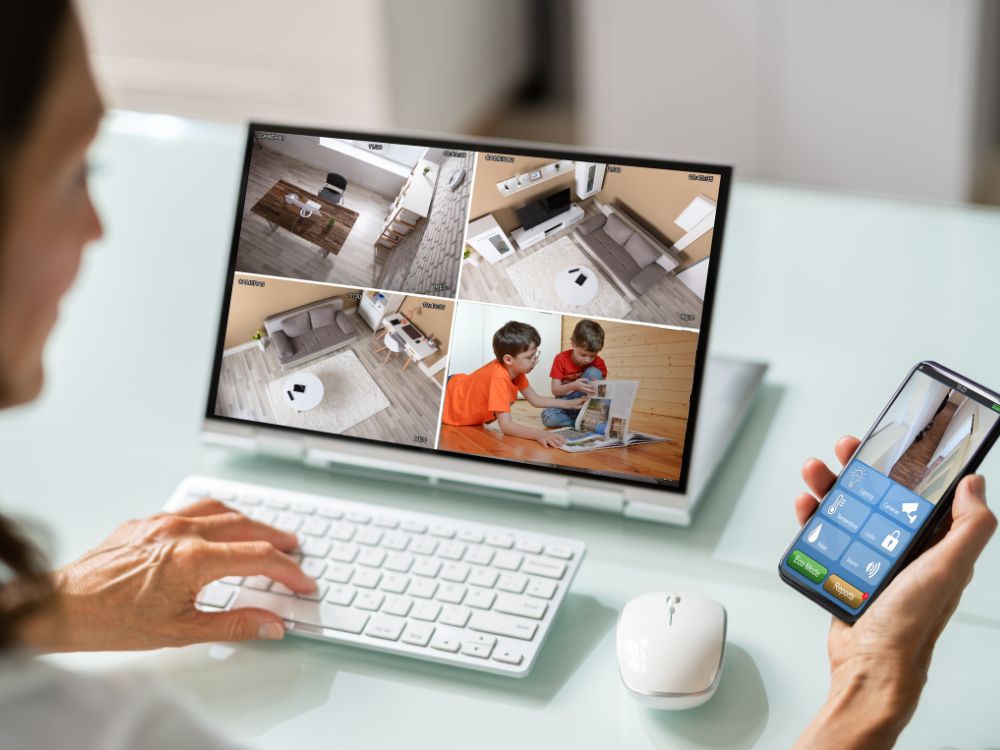Around 2.5 million kids have accidents at home each year.
The good news is that many of these mishaps can be prevented by utilizing straightforward child safety equipment that is now on the market.
Any safety equipment you buy should be user-friendly and strong enough to safeguard your youngster.
It’s crucial to carefully adhere to the installation guidelines.
Make sure older kids who are in the house secure safety equipment as well.
Remember that no gadget is completely childproof; persistent kids have been found to turn them off.
One of the most crucial safety equipment to think about installing at home is a HOME SECURITY CAMERA.
Monitoring the children is very helpful, and installing CCTV will increase your home’s security because it deters criminals, gives you peace of mind, and in some cases may lower your insurance rates.
In order to watch your home from anywhere using your smartphone, tablet, or laptop, it would be preferable to link your home security camera to the internet.
Miniblinds with WINDOW BLIND CORD SAFETY TASSELS, as well as vertical blinds and drapery cords with tensioners, can help prevent strangulation-related fatalities and injuries.
For older miniblinds, remove the buckle, cut the card loop, and add safety tassels to each cable.
Older vertical blinds and drapery ropes may have tension or tie-down systems to keep them taut.
To avoid child strangulation, ask about safety features when buying new miniblinds, verticals, or drapes.
ONOXIDE (CO) DETECTOR can help prevent C0 poisoning.
Carbon Monoxide detectors should be installed near sleeping areas in the home. CO detectors should be installed in homes that have gas or oil heat or attached garages.
OUTLET COVERS and OUTLET PLATES can help protect children from electrical shock and possible electrocution.
Make sure the outlet covers are large enough for kids not to choke on and are difficult for them to remove.
Serious falls can be avoided with the help of WINDOW GUARDS and SAFETY NETTING for decks and balconies.
Verify the security, installation, and maintenance of these safety measures on a regular basis. There shouldn’t be more than four inches between the window guard bars. Make sure at least one window in each room is simple to access in the event of a fire, even if you have window guards. It is futile to install window screens to prevent kids from climbing out of windows.
To help prevent falls and reduce falls against sharp or rough edges, furniture and fireplace hearths can be designed with CORNER and EDGE BUMPERS.
Look for bumpers that are firmly fastened to the hearth or the edges of furniture.
DOOR KNOB COVERS and DOOR LOCKS can assist in keeping youngsters away from potentially hazardous areas, such as swimming pools.
As long as an adult can rapidly open the door in an emergency, the door knob cover should be sturdy enough not to break. By restricting access to potentially hazardous areas inside the home, door knob covers can help prevent a number of injuries. To restrict access to swimming pools, door locks should be placed high and out of small children’s reach. Locks should be utilized in addition to fences and door alarms. As a pool barrier, sliding glass doors with locks that need to be re-secured after each use are typically useless.
SAFETY GATES can assist keep children away from dangerous areas such as stairwells or rooms.
Look for safety gates that are challenging for kids to open but simple for adults to close. At the top of the stairs, screw-in gates are safer than pressure gates.
New safety gates that meet safety requirements are given a certification seal by the Juvenile Products Manufacturers Association (JPMA). Make sure an older safety gate doesn’t have “V” forms big enough to fit a child’s head and neck if you have one.
SAFETY LATCHES and LOCKS on cabinets and drawers can help keep youngsters out of reach of medicines, household cleaners, knives, and other sharp objects.
In order to withstand child pulls and tugs, safety latches and locks should be easy for adults to install and operate. Safety latches can make it more difficult for children to access potentially dangerous products, but they do not guarantee protection. Even packaging designed to deter children from opening it should be kept out of their reach because it is not childproof.

